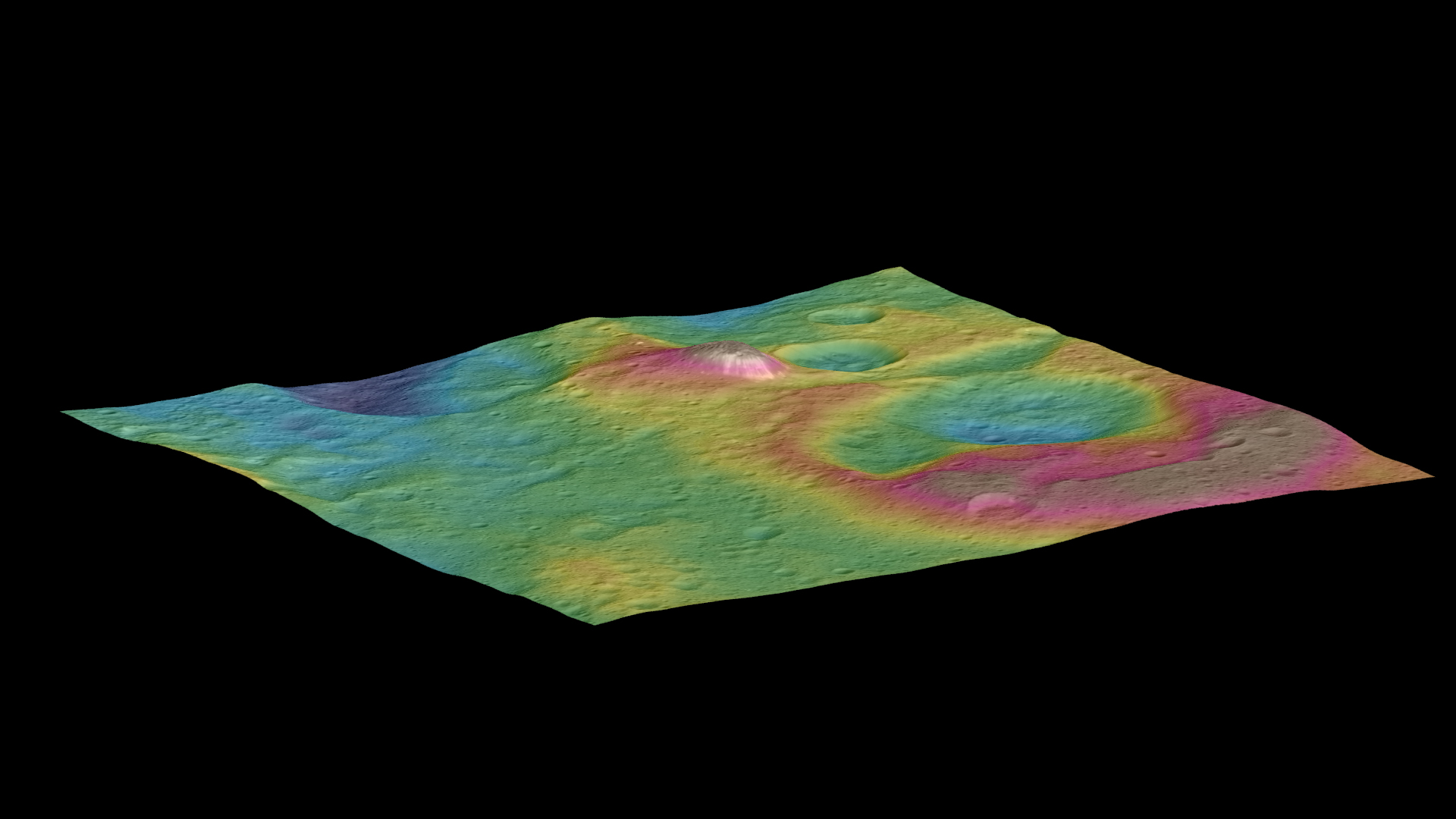Ceres continues to amaze scientists: irregular crater geometry and electromagnetic flares

When you click the image will open in its original size.
This week, the European Planetary Science Conference was held in France, where new data on Ceres, sent by the Dawn probe, was discussed . In addition, the probe sent and photos that surprised the experts. “Ceres continues to surprise and confuse us as new arrays of photos and data become available,” said Chris Russell, a representative of the Dawn project team.
Based on old and new data, scientists compiled the colorful topographic data of Ceres, including a detailed map of the crater, in which the bright spots of the planetoid are located. Specialists gave names to many objects, and these names were taken from the mythology of various cultures (basically, the names are the names of agricultural spirits). Another map shows the different layers of the surface of Ceres, the difference here is more significant than that of the asteroid West, which Dawn studied earlier. Such a map is made for the crater, which houses the most mysterious bright spots, as well as for the 6-kilometer mountain of Ceres.
“The irregular outlines of the craters of Ceres are very interesting, their shape is different from the shape of the craters of Rhea, the satellite of Saturn. Also very different from the shape of the craters of Vesta, "- says Carol Raymond of NASA.
')

When you click the image will open in its original size.
And one more surprise - the information obtained by a neutron spectrometer and gamma radiation. The tool recorded three flashes of high-energy electrons, which may be the result of the interaction of Ceres and the sun's radiation. So far, this observation has not received a full explanation, but the event may be important for understanding the structure of the planetoid and the processes occurring on Ceres.
“This is an unexpected observation, for which we are now compiling an explanation,” said Chris Russell.
Currently, the Dawn probe is in a relatively low orbit of Ceres, at an altitude of 1,470 kilometers from the surface of the planetoid. The spacecraft will receive a complete image of the entire surface of the planetoid during several flights of the object. Each flight takes about 11 days.

When you click the image will open in its original size.
Beginning in October, Dawn moves to an even lower orbit — 375 kilometers from the surface. In this position, the spacecraft will continue to monitor Ceres and photograph its surface. The device will work at least until mid-2016.
Dawn reached Ceres on March 6 of this year, and immediately began work on studying the object. The total residence time of the probe at Ceres will be about 16 months. At the same time, during a rapprochement with the planetoid, the spacecraft had problems - the probe stopped responding to commands from the control center. Immediately after that, Dawn's computer went into safe mode, and after a while it started up again.
The diameter of Ceres itself is 940 km, and it is the largest object in the asteroid belt, which is located between Mars and Jupiter. In fact, the size of Ceres is about 40% of the size of Pluto.
Source: https://habr.com/ru/post/366559/
All Articles